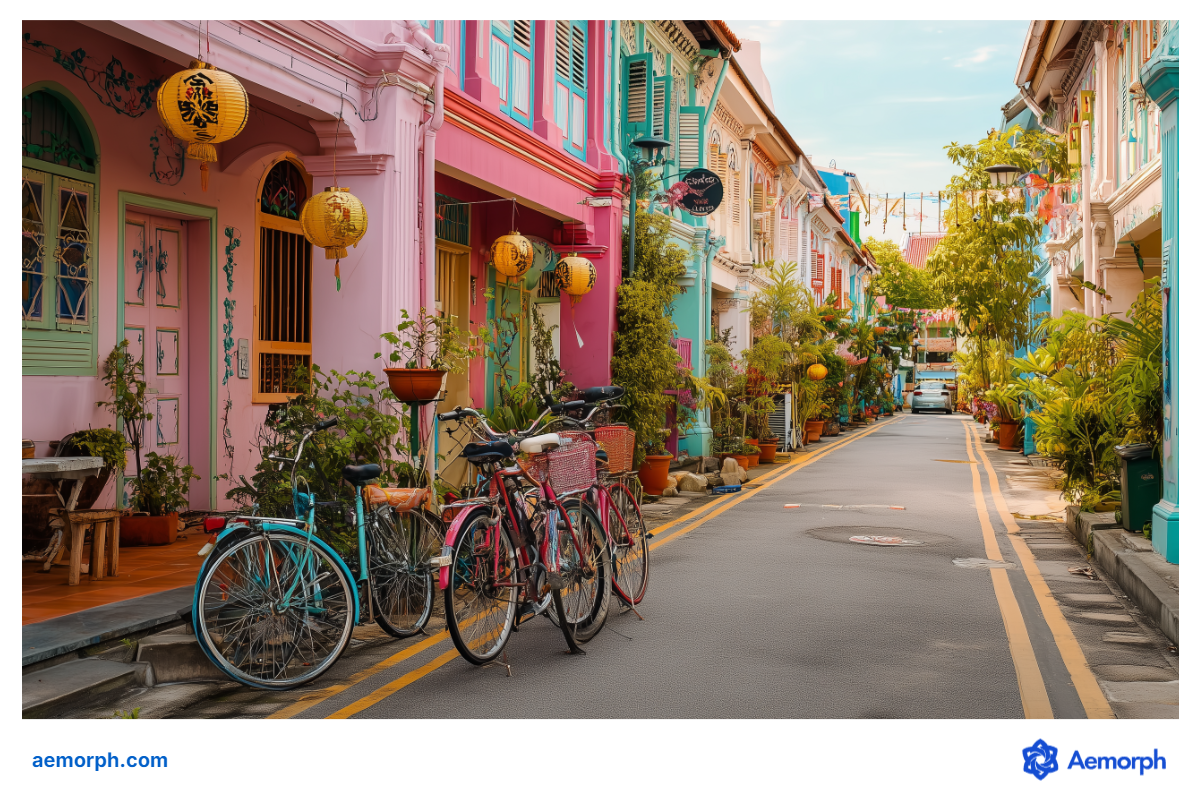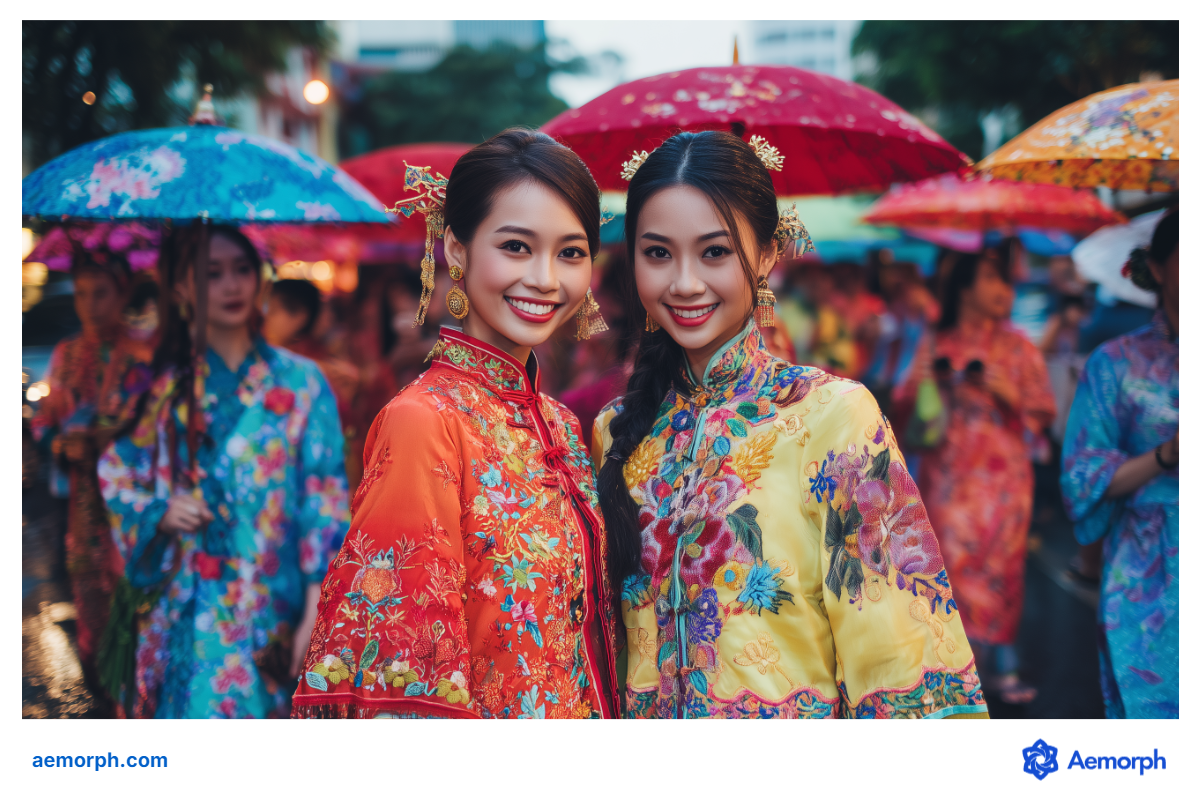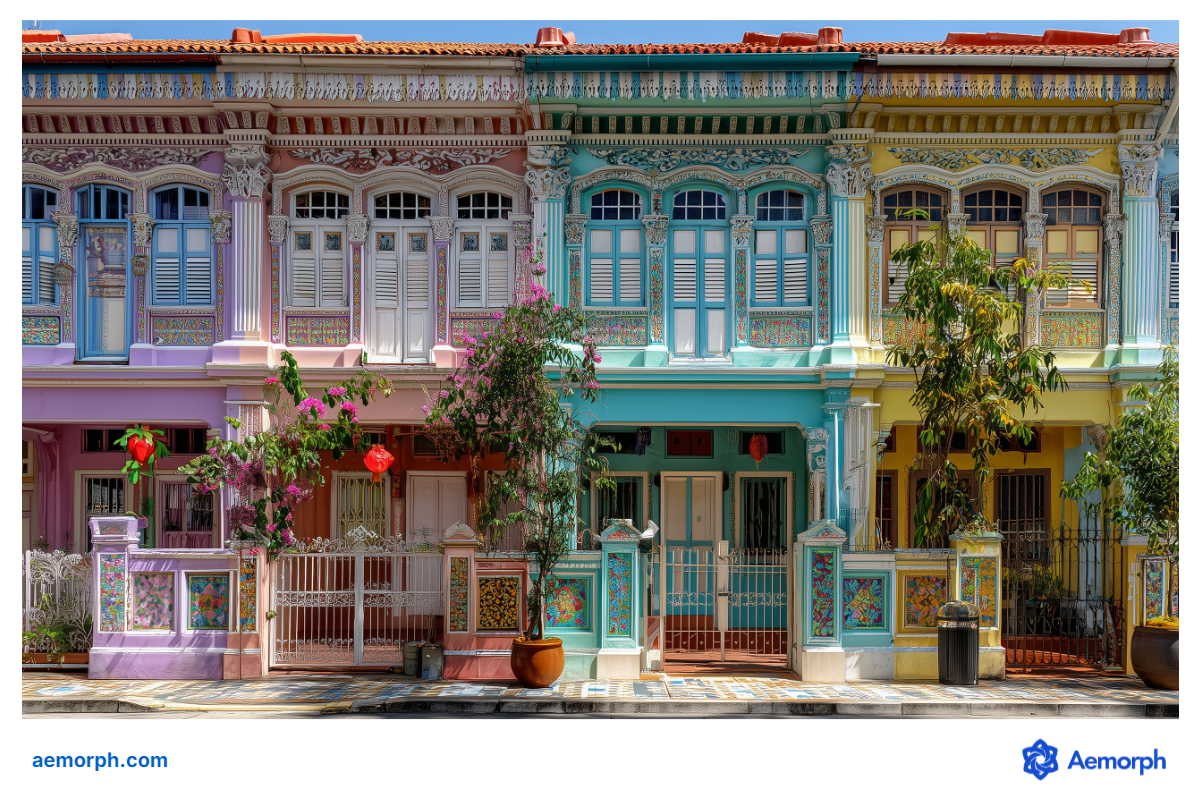
Peranakan culture forms a vibrant thread in Singapore’s multicultural fabric. It embodies a fusion of Chinese, Malay, and colonial influences, resulting in a uniquely Singaporean heritage. For locals and business owners alike, understanding this cultural lineage isn’t just about history—it’s about recognising the roots of modern Singaporean identity, aesthetics, and even enterprise.
This article explores the historical formation of the Peranakan community, their early societal roles, and why their cultural legacy continues to influence Singapore today.
Who Are the Peranakans?
The term “Peranakan” comes from the Malay word anak, meaning “child” or “locally born.” It broadly refers to descendants of foreign traders who settled in Southeast Asia and married local women. In Singapore, it most commonly refers to the Chinese Peranakans, also known as the Straits Chinese or Baba-Nyonya community. “Baba” is used for men, while “Nyonya” refers to women.
Historically, many Peranakan Chinese trace their roots to the 15th-century Malacca Sultanate, a major trading port where Chinese traders married local Malay women. A popular legend also attributes part of their origin to the arrival of Princess Hang Li Po, a Chinese princess sent by the Ming Emperor to marry the Sultan of Malacca in the mid-15th century, along with her entourage of Chinese attendants who settled locally and intermarried with indigenous peoples
The Peranakan culture flourished in key regional centres such as Malacca, Penang, Singapore, and parts of southern Thailand and Indonesia. The community has developed a unique culture that blends Chinese traditions with Malay and Indonesian influences, encompassing language, dress, cuisine, and religious practices.
Cultural Markers That Defined Early Peranakan Society
Peranakan identity was not defined by language or appearance alone, but by lifestyle and aesthetic. Food, fashion, and architecture each played a crucial role in expressing their blended heritage and distinguishing their community.
Peranakan Food: Culinary Identity and Local Favourites

Nyonya cuisine is one of the most tangible and celebrated aspects of Peranakan culture. Known for its complexity, this cuisine combines traditional Chinese cooking techniques with Malay spices and ingredients, such as coconut milk, tamarind, and lemongrass. This rich blend of influences makes it a cornerstone of Peranakan food in Singapore.
Some of the most recognisable dishes include:
- Ayam Buah Keluak – Chicken stewed with black keluak nuts, known for its earthy, savoury flavour and deep black gravy made from fermented Indonesian nuts.
- Laksa – A spicy noodle soup made with a coconut curry base, combining rice noodles, shrimp, and fish cake for a rich, aromatic experience.
- Babi Pongteh – A comforting braised pork dish made with fermented soybeans, often slow-cooked with potatoes and mushrooms for depth of flavour.
- Nyonya Kueh – Bite-sized steamed or baked snacks and desserts made with glutinous rice, coconut milk, tapioca flour, and palm sugar, often brightly coloured and layered.
- Bubur Cha Cha – A sweet dessert soup of coconut milk, sweet potatoes, bananas, and chewy sago pearls, served hot or cold and loved for its creamy texture and vibrant colour.
If you’re looking for the best Peranakan food in Singapore, head to Katong. This district is a pioneer in Nonya cuisine, managed by a pure Peranakan family for three generations, serving traditional dishes such as Selar Sambal Fish, stuffed with rempah, Nonya Crayfish, and Assam Prawns.
Fashion and Identity

The nyonya kebaya is a distinctive feature of Peranakan fashion, often accompanied by a delicate blouse paired with batik sarongs. Embroidered with floral and butterfly motifs, it exemplifies both femininity and craftsmanship. Accessories like the kasut manik (beaded slippers) and cucuk sanggul (hairpins) completed the ensemble.
This fashion style became iconic and even inspired the sarong kebaya uniforms of Singapore Airlines.
Architecture and Aesthetics

Peranakan homes, especially shophouses in Katong and Joo Chiat, are known for their vibrant facades, decorative tiles, and pintu pagar (half-length swing doors). These homes often blended Chinese blackwood furniture with European chandeliers and Malay design elements, creating a truly multicultural aesthetic.
Peranakan Museum: Preserving a Living Legacy
The Peranakan Museum in Singapore is a key institution dedicated to showcasing the vibrant Peranakan heritage. Located in the former Tao Nan School building, a conserved neoclassical structure built in 1912, the museum offers an immersive experience into the lives of the Peranakan community, particularly those from Joo Chiat and Katong areas.
The museum features ten permanent galleries and now houses over 800 artefacts across themed galleries such as “Origins,” “Home,” and “Style.”. It explores various aspects of Peranakan culture, including its origins, traditional wedding ceremonies, arts and crafts such as beadwork and the iconic Nonya kebaya, religion, social and political life, and food and feasting. One highlight is the Peranakan Wedding Bed, a significant artefact illustrating traditional matrimonial customs.
Other key sites include:
- NUS Baba House: A restored townhouse with immersive interior tours.
- Katong Antique House: A living archive of domestic Peranakan life.
- The Intan: A private museum curated by Alvin Yapp, filled with heirlooms.
Peranakan Traditions: Enriching Singapore’s Cultural Landscape
Peranakan culture in Singapore is a fascinating fusion of ethnic traditions, manifested in distinctive art, clothing, and especially, food. The Peranakan Museum offers a comprehensive cultural and historical overview, while neighbourhoods like Joo Chiat and Katong, along with restaurants and private museums, provide immersive experiences that allow you to appreciate this unique heritage.
By understanding its origins and supporting its preservation, we ensure that the vibrant story of the Babas and Nyonyas continues to enrich Singapore for generations to come.
Explore more cultural insights in our features on Singapore’s rich and diverse cultural landscape, from historic neighbourhoods to contemporary expressions of identity.









